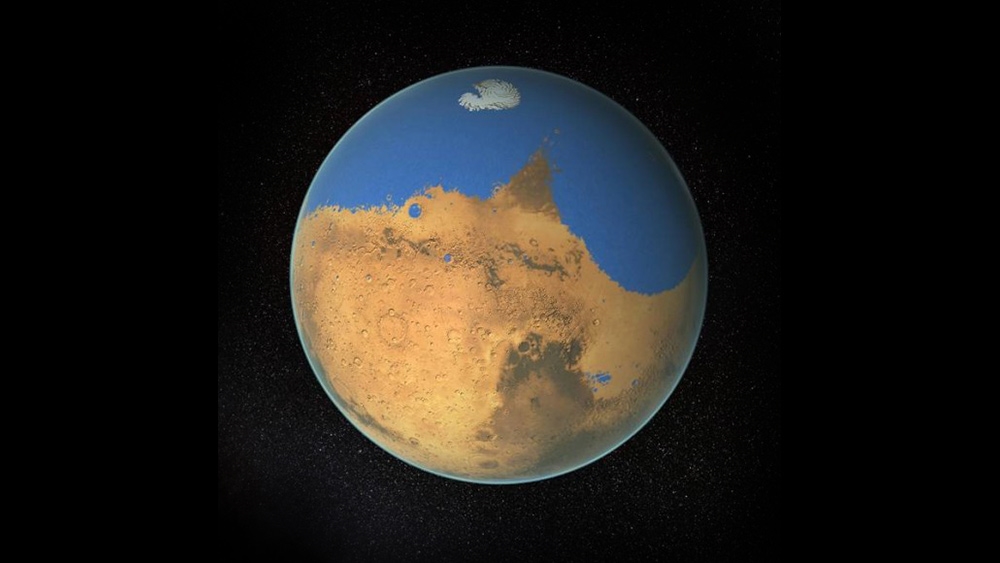Interstellar space travel: Another meteor from a distant star discovered by scientists, hit Earth in 2014 before ‘Oumuamua
09/30/2019 / By Edsel Cook

‘Oumuamua is the first interstellar object discovered by man. But Harvard researchers have claimed that a smaller space rock from another star system arrived in the solar system years earlier – only to burn up inside the Earth’s atmosphere.
Their findings suggested that such interstellar meteoroids may be numerous. Furthermore, alien life may hitch a ride aboard those objects and end up on planets in other star systems.
Named after the Hawaiian word for “scout,” ‘Oumuamua showed up in 2017. The object resembled a cigar and measured 1,300 feet (400 m) in length.
Researchers studied the speed and direction of the solar system’s first interstellar object. They theorized that ‘Oumuamua originated from another star system – some even believed that more than one star was involved in its trip through interstellar space.
Given the rarity of such a big interstellar object, Harvard University researcher Avi Loeb thought that smaller counterparts might prove more numerous. Some of these interstellar meteors may have hit Earth in the past and made enough of a mark to get spotted. (Related: Sci-fi in real life: Scientists propose building a space station INSIDE an asteroid and using its gravity to mine valuable space rocks.)
Earth got hit by at least one interstellar meteor in the recent past
Loeb and lead author Amir Siraj recently announced that they might have identified a meteor from interstellar space. If confirmed, the discovery will enter the annals as the second known interstellar visitor to the solar system.
The Harvard researchers drew their data from a catalog of meteors recorded by the U.S. government. They looked for cases of small space rocks that traveled at considerable velocities.
Objects bound to the gravitational pull of the sun tend to have limits on their top speed. Otherwise, they would break orbit and leave the solar system.
Conversely, interstellar visitors are not bound to the sun’s gravitational field. They move at much higher speeds, fast enough to escape the pull of their parent star, escape their home system, and travel through interstellar space.
In their study, Loeb and Siraj came across a meteor event that took place over Manus Island, Papua New Guinea on January 8, 2014. The meteor measured three feet (0.9 m) across and clocked in at a speed of 134,000 mph (216,000 kph) – nearly 175 times the speed of sound.
“We can use the atmosphere of the Earth as the detector for these meteors, which are too small to otherwise see,” explained Loeb.
Studying interstellar meteors may tell us more about their bigger cousins
The high speed and trajectory of the interstellar meteor suggested that it came from outside the solar system. It may have gotten a boost from a strong gravitational field at some point in its trip.
“You can imagine that if these meteors were ejected from the habitable zone of a star, they could help transfer life from one planetary system to another,” Loeb said.
He and Siraj found two other meteors that more or less matched the velocity of the 2014 event. However, one of the candidates appeared to be still bound to the sun’s gravitational field. The other one may or may not be an interstellar object.
The Harvard team calculated that each cubic astronomical unit (AU) of space in the universe contained around a million interstellar meteors. For context, the gap between Earth and the sun averages out to one AU.
Siraj and Loeb also noted that the gas produced by the vaporized interstellar meteors might reveal the composition of other visitors from distant star systems. A spectroscope may identify the debris based on the light that they give off as the space rock burns up in the atmosphere.
Stay up-to-date with the latest news and studies on ‘Oumuamua and other interstellar visitors at Space.news.
Sources include:
Tagged Under: 'Oumuamua, alien life, astronomy, breakthrough, cosmic, discoveries, interstellar objects, interstellar space, interstellar visitor, meteorites, meteors, outer space, Space, space research, space rocks
RECENT NEWS & ARTICLES
Cosmic.News is a fact-based public education website published by Cosmic News Features, LLC.
All content copyright © 2018 by Cosmic News Features, LLC.
Contact Us with Tips or Corrections
All trademarks, registered trademarks and servicemarks mentioned on this site are the property of their respective owners.


















